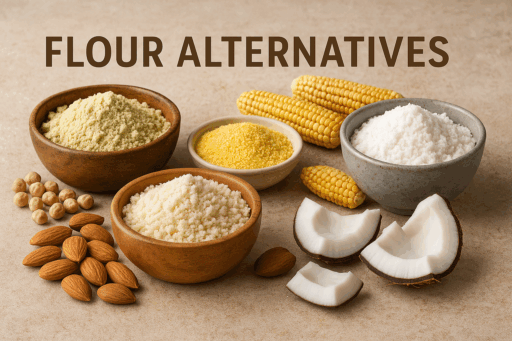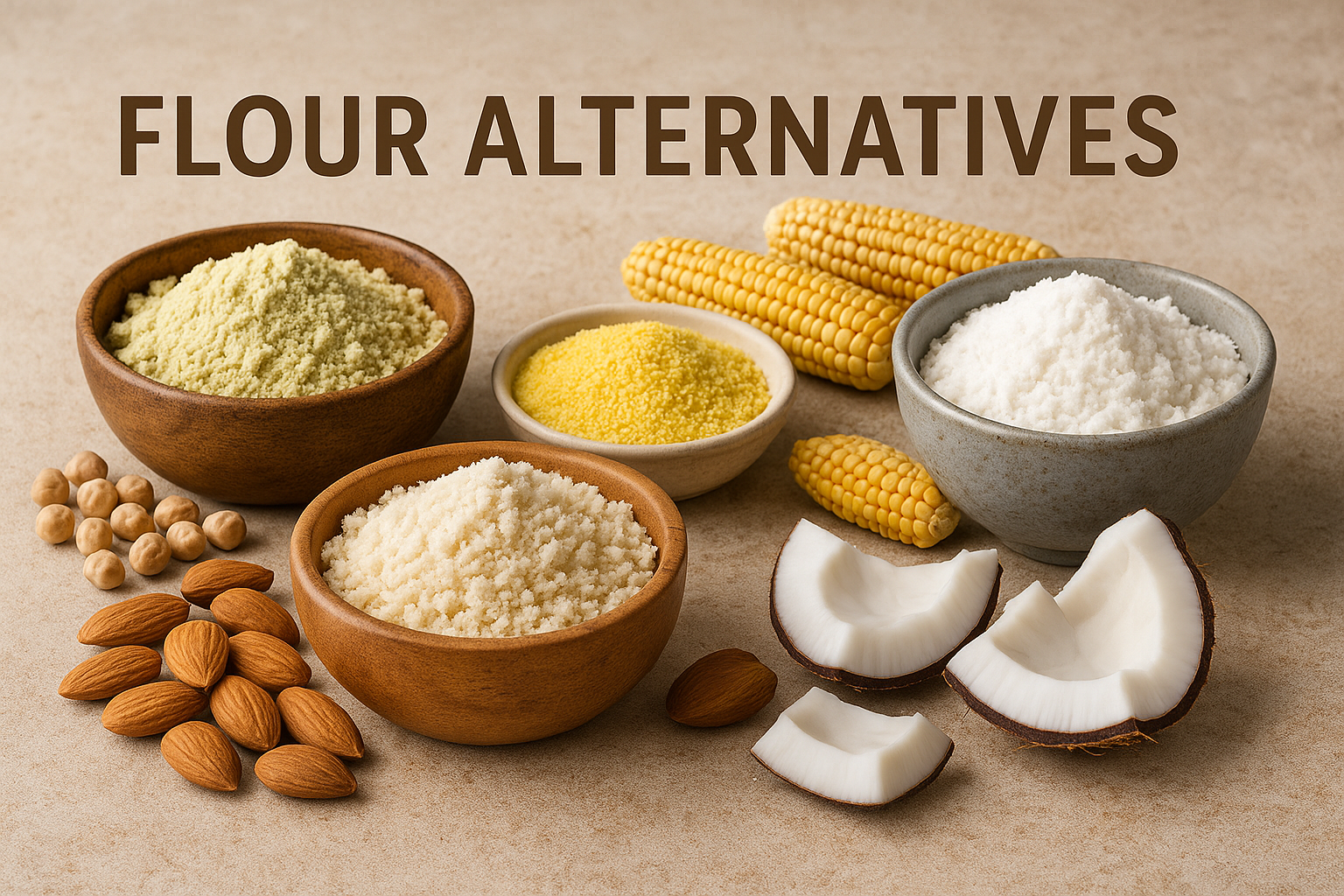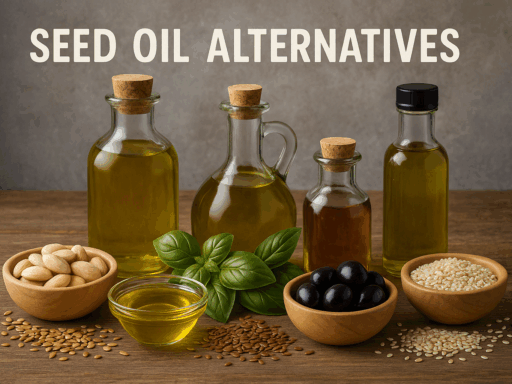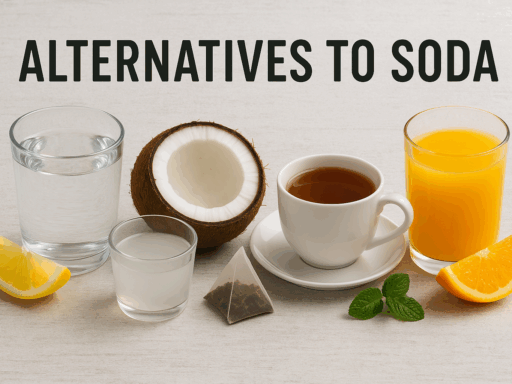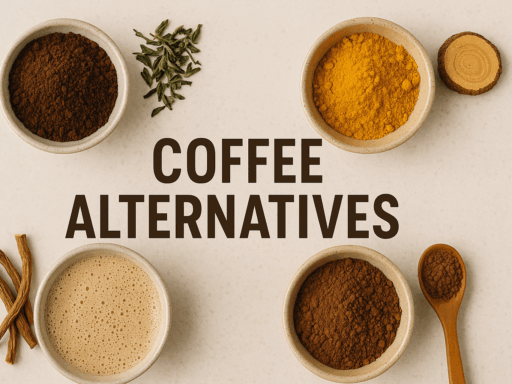Flour is a key ingredient in many everyday foods, from breads and cakes to pasta and pancakes. However, traditional wheat flour, especially refined white flour, is high in carbohydrates and may not be suitable for individuals with dietary restrictions such as gluten intolerance or those looking to reduce their carb intake. As the demand for healthier, more sustainable food options grows, flour alternatives are becoming increasingly popular.
In this article, we will explore the best flour alternatives, their health benefits, sustainability, applications, and challenges. Whether you’re gluten-free, following a low-carb diet, or just looking for more nutritious baking options, these alternatives offer a range of possibilities for improving your cooking and baking practices.
Why Consider Flour Alternatives?
Traditional wheat flour, particularly refined white flour, is high in refined carbohydrates, which can cause blood sugar spikes and contribute to weight gain and other health problems when consumed in excess. Additionally, wheat contains gluten, which can be problematic for individuals with gluten sensitivities or celiac disease. As a result, many people are turning to flour alternatives that offer better nutritional profiles, such as higher fiber content, lower glycemic indices, and better health benefits.
Flour alternatives also provide a more sustainable option for cooking and baking. Many of these alternative flours are produced from crops that require fewer resources and have lower environmental impacts compared to conventional wheat farming. These alternatives can also cater to specific dietary preferences, such as gluten-free, low-carb, or grain-free diets.
Top Flour Alternatives and Their Benefits
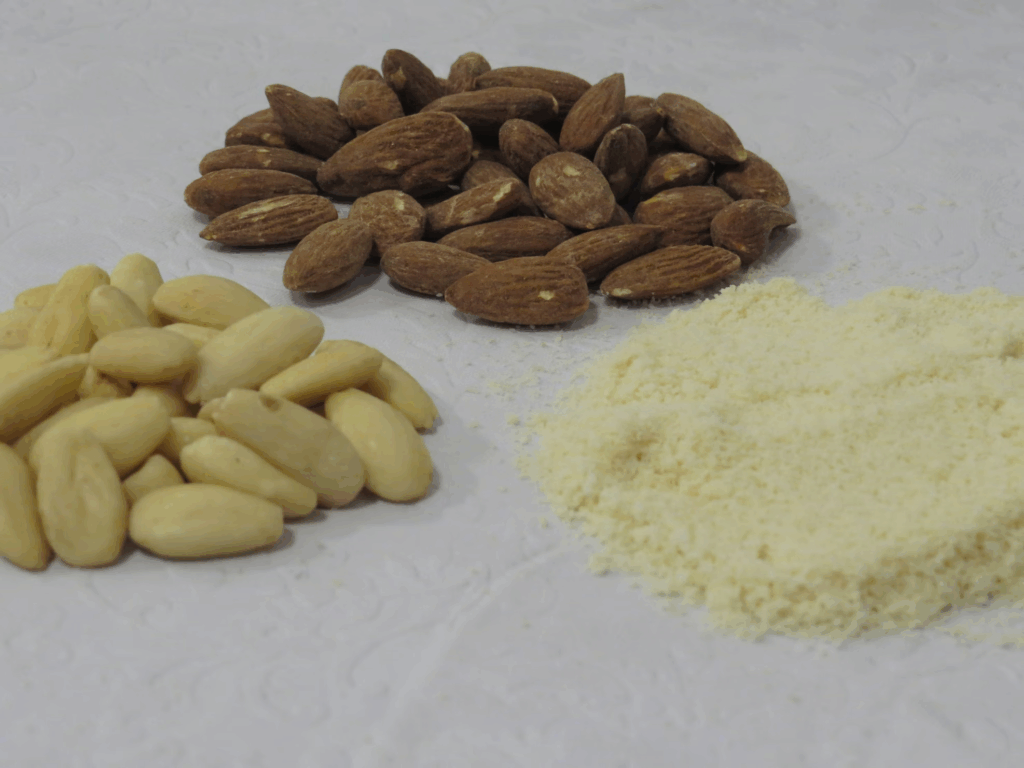
1. Almond Flour
Almond flour is made from finely ground almonds and is a popular gluten-free alternative to traditional flour. It is a rich source of healthy fats, fiber, and protein, making it a great option for those seeking more nutritious flour alternatives.
- Applications: Almond flour is perfect for baking, especially in recipes for cookies, cakes, pancakes, and muffins. It can also be used as a breading for meats or vegetables.
- Health Benefits: Almond flour is rich in healthy fats, particularly monounsaturated fats, which are heart-healthy and may help lower bad cholesterol levels. It is also high in vitamin E and magnesium, supporting skin health and muscle function.
Sustainability:
- Almond farming has been criticized for its high water usage, particularly in regions like California, where water scarcity is an issue. However, some sustainable almond farming practices are being introduced to mitigate these concerns.
Challenges:
- Cost: Almond flour tends to be more expensive than traditional wheat flour due to the cost of almonds and the processing required to make the flour.
- Taste: Almond flour has a slightly nutty flavor, which may not be suitable for all recipes, particularly savory dishes where a neutral flour is preferred.
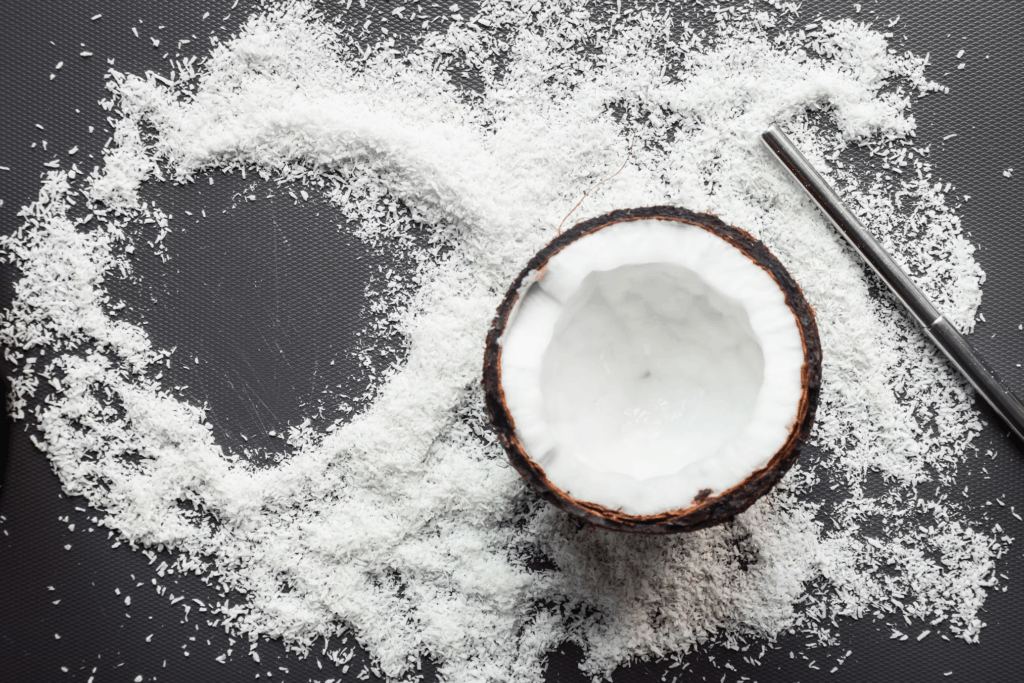
2. Coconut Flour
Coconut flour is made from dried coconut meat and is a great gluten-free, low-carb alternative to traditional flour. It is highly absorbent, so recipes often require adjustments when substituting coconut flour for wheat flour.
- Applications: Coconut flour is perfect for baking, especially in recipes for cakes, muffins, and cookies. It can also be used as a thickener in soups and sauces.
- Health Benefits: Coconut flour is rich in fiber, which aids in digestion and helps maintain healthy blood sugar levels. It is also a good source of healthy fats and contains antioxidants that support overall health.
Sustainability:
- Coconut farming is relatively water-efficient and does not require extensive land use. However, concerns have been raised about the environmental impact of large-scale coconut farming, particularly deforestation in certain regions.
Challenges:
- Absorbency: Coconut flour is highly absorbent, which means it requires more liquid in recipes. This can make it tricky to use as a one-to-one substitute for wheat flour, and adjustments are needed to avoid overly dry or dense baked goods.
- Flavor: Coconut flour has a distinct coconut flavor, which may not work well in all recipes, particularly savory dishes.
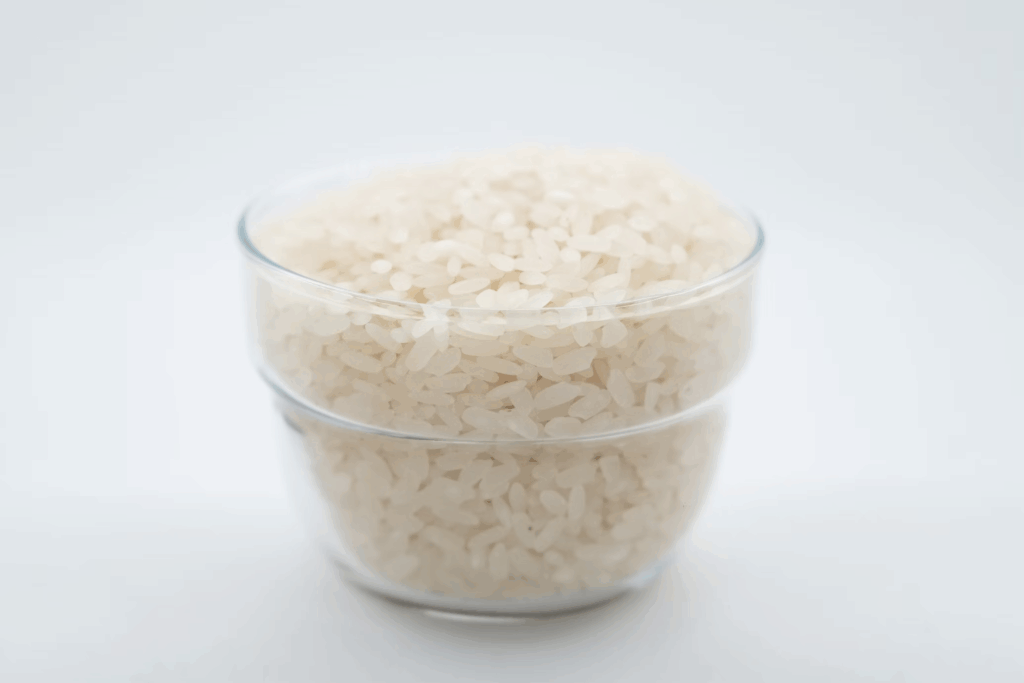
3. Rice Flour
Rice flour is a staple in many gluten-free and Asian cuisines. It is made by grinding rice into a fine powder and is commonly used as a thickener in sauces and soups.
- Applications: Rice flour is often used in gluten-free baking and can be used as a thickening agent for sauces and gravies. It’s also used in Asian cuisine to make rice noodles, dumplings, and other rice-based dishes.
- Health Benefits: Rice flour is easy to digest and a good source of carbohydrates for those on a gluten-free diet. It’s also rich in B-vitamins and iron, which are important for energy production and red blood cell health.
Sustainability:
- Rice cultivation requires significant water usage, which raises concerns about its environmental impact in regions where water scarcity is an issue. However, some sustainable farming practices are being introduced to reduce water waste in rice farming.
Challenges:
- Texture: Rice flour can have a slightly gritty texture, which may affect the texture of baked goods and other dishes. It is often combined with other gluten-free flours to improve the texture of baked items.
- Glycemic Index: Rice flour has a high glycemic index, which means it can cause blood sugar spikes when consumed in large quantities.
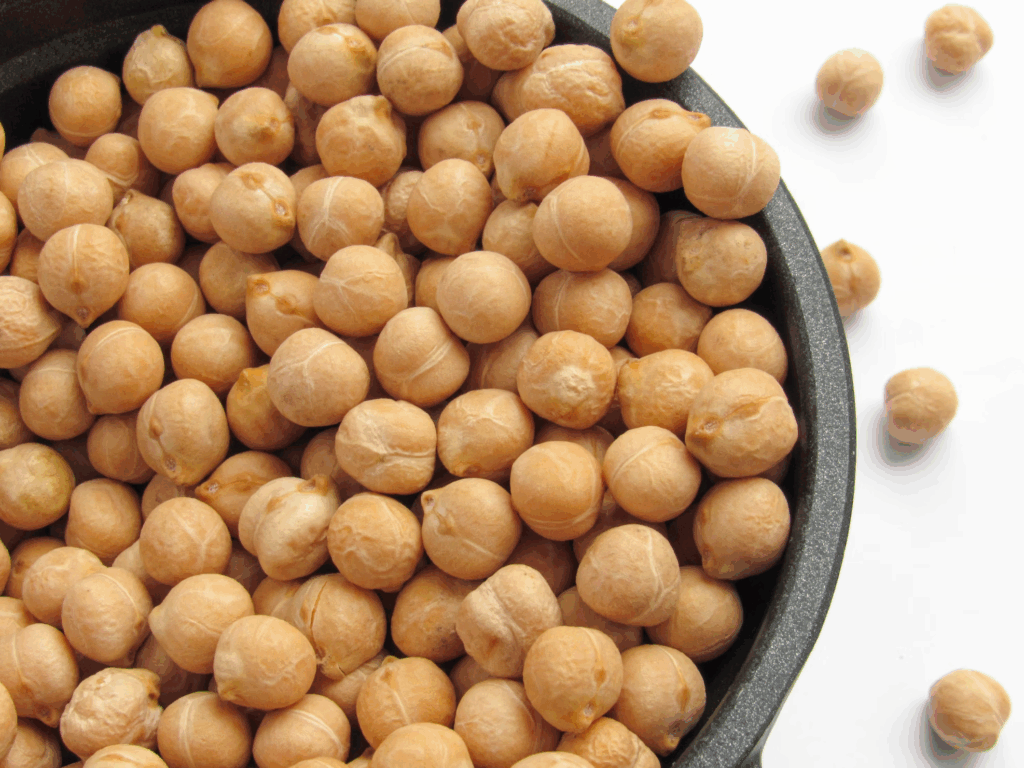
4. Chickpea Flour
Chickpea flour (also known as garbanzo bean flour) is made from ground chickpeas and is a popular gluten-free, high-protein alternative to traditional wheat flour.
- Applications: Chickpea flour is ideal for making gluten-free pancakes, flatbreads, and savory dishes like falafel and veggie burgers. It can also be used as a thickener for soups and sauces.
- Health Benefits: Chickpea flour is rich in protein, fiber, and essential vitamins and minerals, such as folate, iron, and magnesium. It supports digestive health, helps manage blood sugar levels, and promotes muscle health.
Sustainability:
- Chickpeas are a relatively sustainable crop that requires less water and land compared to many other grains. They also help fix nitrogen in the soil, which benefits the environment by improving soil health.
Challenges:
- Flavor: Chickpea flour has a strong, earthy flavor, which may not be suitable for all recipes, especially sweet dishes.
- Texture: Like other gluten-free flours, chickpea flour can produce a denser texture in baked goods and may require additional ingredients to improve structure.

5. Tapioca Flour
Tapioca flour, also known as tapioca starch, is derived from the cassava root, a starchy tuber native to South America. It is often used as a thickener and a gluten-free alternative to wheat flour.
- Applications: Tapioca flour is often used in gluten-free baking to create chewy textures in baked goods, such as bread and pizza crust. It’s also commonly used as a thickening agent for sauces, gravies, and puddings.
- Health Benefits: Tapioca flour is low in fat and contains no gluten, making it an excellent option for individuals with gluten sensitivity. However, it is mostly made up of carbohydrates and has little to no protein or fiber.
Sustainability:
- Cassava is a drought-tolerant crop that requires minimal water compared to other grains, making tapioca flour a more sustainable option. However, large-scale cassava farming can lead to deforestation and soil degradation in some regions.
Challenges:
- Nutritional Content: Tapioca flour is low in protein and fiber, which means it doesn’t offer much in terms of nutritional value beyond carbohydrates.
- Glycemic Index: Tapioca flour has a high glycemic index, which can cause blood sugar spikes when consumed in excess.
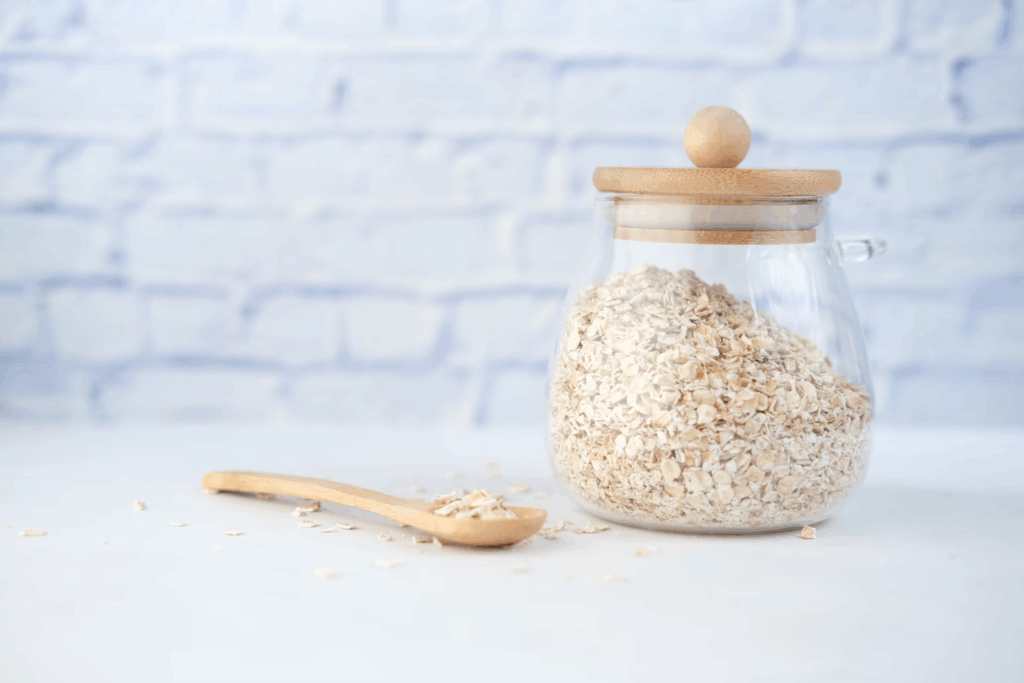
6. Oat Flour
Oat flour is made from ground oats and is a popular gluten-free alternative to wheat flour. Oats are rich in fiber and provide a mild, slightly sweet flavor to baked goods.
- Applications: Oat flour can be used in baking, particularly for making pancakes, muffins, cookies, and bread. It can also be used as a thickener for smoothies and soups.
- Health Benefits: Oat flour is high in soluble fiber, particularly beta-glucans, which help reduce cholesterol and support heart health. It also contains antioxidants and is a good source of iron and magnesium.
Sustainability:
- Oats are considered a sustainable crop because they require less water and pesticides compared to other grains. They also improve soil health through crop rotation, making them environmentally friendly.
Challenges:
- Texture: Oat flour can be a bit dense in certain recipes and may require additional binders, like eggs or xanthan gum, when used in gluten-free baking.
- Gluten Sensitivity: While oats are naturally gluten-free, cross-contamination with gluten-containing grains can occur during processing, so it’s important to use certified gluten-free oat flour.
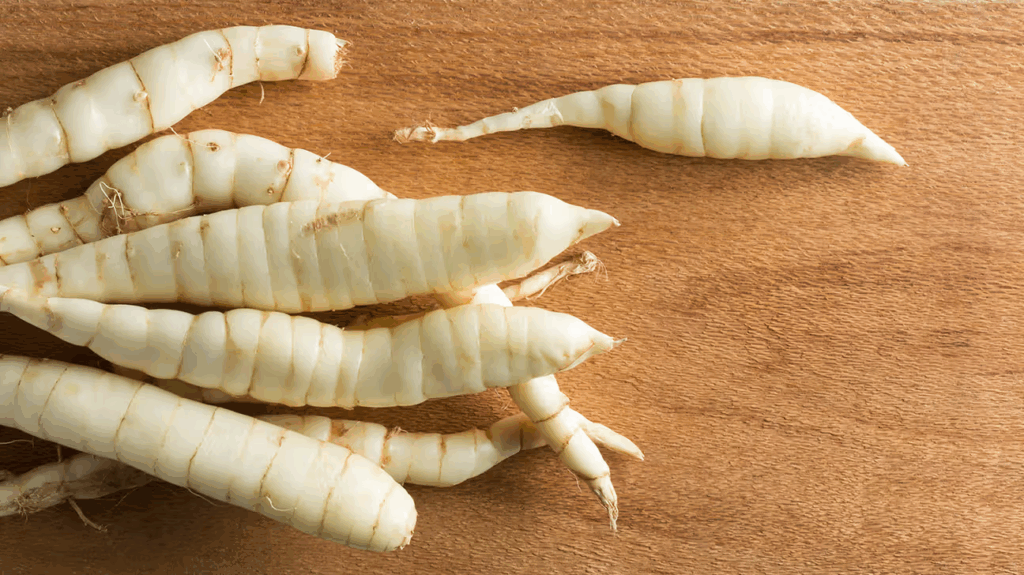
7. Arrowroot Flour
Arrowroot flour is derived from the root of the arrowroot plant and is commonly used as a thickening agent. It is gluten-free and has a neutral flavor.
- Applications: Arrowroot flour is typically used in sauces, gravies, and puddings as a thickener. It can also be used in gluten-free baking to provide lightness and structure to baked goods.
- Health Benefits: Arrowroot flour is easy to digest and is often used to soothe the digestive system. It is also low in calories and fat and provides a good source of potassium and iron.
Sustainability:
- Arrowroot is a relatively low-impact crop, requiring minimal water and land to grow. It is well-suited for tropical climates and has a smaller environmental footprint compared to other starches.
Challenges:
- Cost: Arrowroot flour is generally more expensive than other flours due to its labor-intensive production process.
- Limited Use: Arrowroot is mainly used for thickening and lightening baked goods, so it may not be as versatile as other flours in general baking applications.
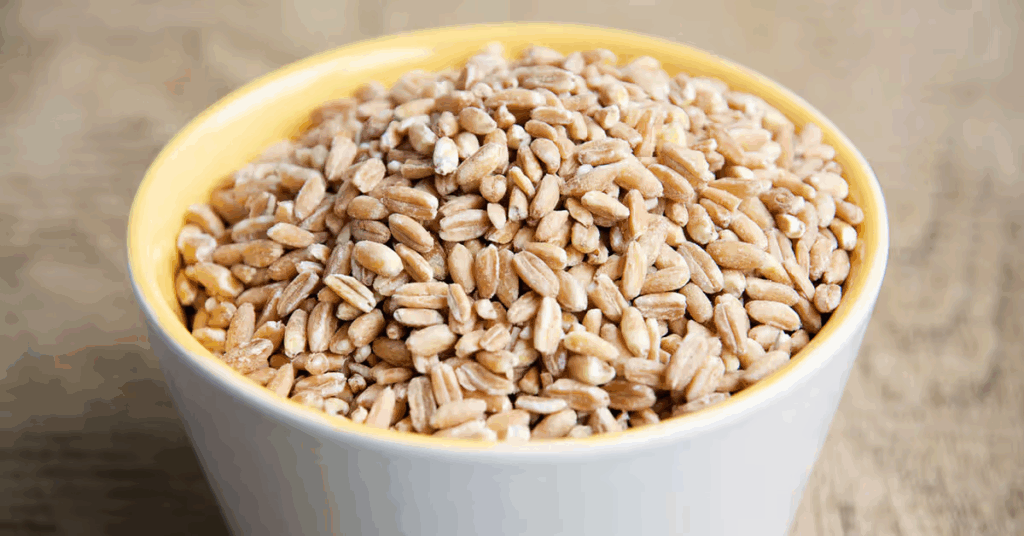
8. Spelt Flour
Spelt flour is an ancient grain that is closely related to wheat but is considered to be more easily digestible. While spelt flour does contain gluten, it is often tolerated better by those with mild gluten sensitivities.
- Applications: Spelt flour can be used in any recipe that calls for wheat flour, including bread, pasta, and baked goods. It has a slightly nutty flavor and works well in both savory and sweet recipes.
- Health Benefits: Spelt flour is rich in protein, fiber, and B-vitamins. It is also a good source of antioxidants and essential minerals like magnesium and iron, which promote heart and digestive health.
Sustainability:
- Spelt is an environmentally friendly crop, as it requires less water and fewer pesticides than conventional wheat. It also grows well in poor soil, making it a resilient crop for sustainable farming.
Challenges:
- Gluten Content: Although spelt is more easily digestible than regular wheat, it still contains gluten, making it unsuitable for individuals with celiac disease or severe gluten intolerance.
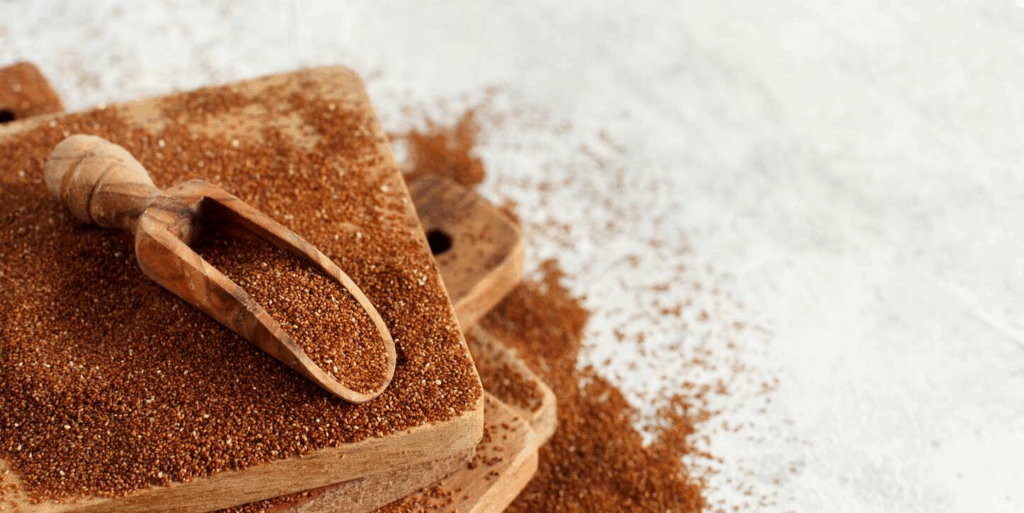
9. Teff Flour
Teff flour is made from the tiny seeds of the teff plant, which is native to Ethiopia. It is a gluten-free flour that is rich in nutrients, including fiber, protein, and iron.
- Applications: Teff flour is commonly used in baking, especially for making Ethiopian flatbreads like injera. It can also be used in pancakes, muffins, and cookies.
- Health Benefits: Teff is an excellent source of iron, which is crucial for red blood cell production. It is also rich in fiber and protein, making it a great choice for managing blood sugar levels and supporting heart health.
Sustainability:
- Teff is a drought-resistant crop that requires minimal water and is well-suited to organic farming practices. Its ability to thrive in a variety of climates makes it an environmentally sustainable choice.
Challenges:
- Availability: Teff flour can be harder to find in stores outside of specialty markets or health food stores, especially outside of Africa.
- Flavor: Teff has a slightly earthy, nutty flavor, which may not suit all recipes, particularly those that require a neutral-tasting flour.
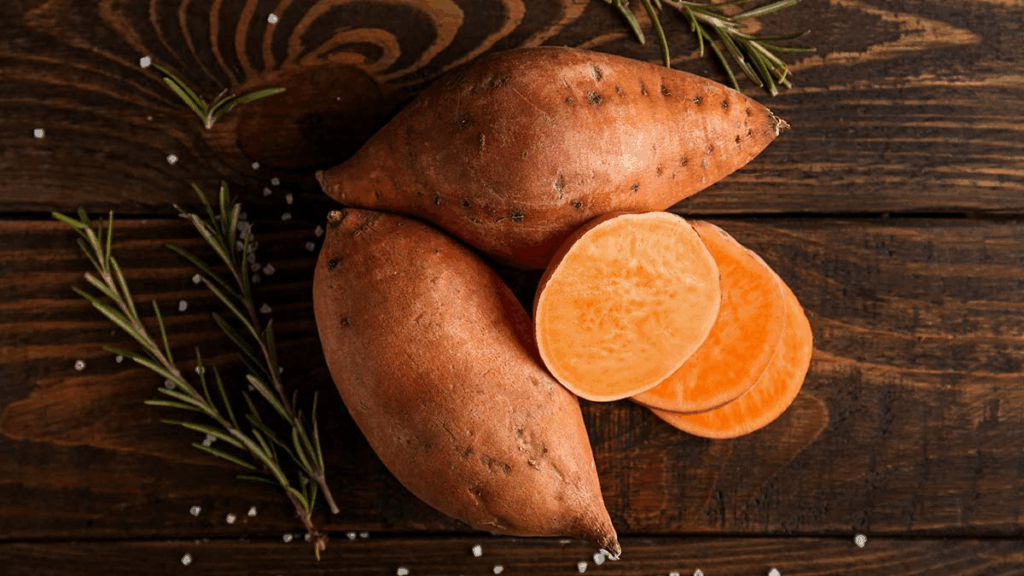
10. Sweet Potato Flour
Sweet potato flour is made by drying and grinding sweet potatoes into a fine powder. It is a nutrient-dense, gluten-free flour alternative with a mild, slightly sweet flavor.
- Applications: Sweet potato flour is commonly used in gluten-free baking, especially for making pancakes, muffins, and breads. It can also be used as a thickener for soups and sauces.
- Health Benefits: Sweet potato flour is rich in vitamins A and C, as well as antioxidants that support immune function and skin health. It is also a good source of fiber, which aids in digestion.
Sustainability:
- Sweet potatoes are relatively water-efficient and can be grown in various climates. They are a resilient crop that requires fewer resources than other grains, making sweet potato flour a sustainable option.
Challenges:
- Taste: The mild sweetness of sweet potato flour may not be suitable for all recipes, especially those where a more neutral flavor is required.
- Texture: Like coconut flour, sweet potato flour can be dense and absorbent, which requires recipe adjustments when substituting it for wheat flour.
particularly savory dishes.

11. Corn Flour
Corn flour, made from finely ground cornmeal, is a versatile gluten-free flour often used in various cultures for making flatbreads, tortillas, and baking.
- Applications: Common in Latin American and Mediterranean cuisine for making tortillas, tamales, and cornbread.
- Benefits: Corn flour is a great source of carbohydrates and energy, and it provides a fine, light texture to baked goods.
- Sustainability: Corn farming is resource-intensive, requiring significant amounts of water and land. However, it is a widely grown crop and often used for sustainable food production.
- Challenges: Corn flour can lead to a dense texture in baked goods, and it’s not suitable for all recipes.
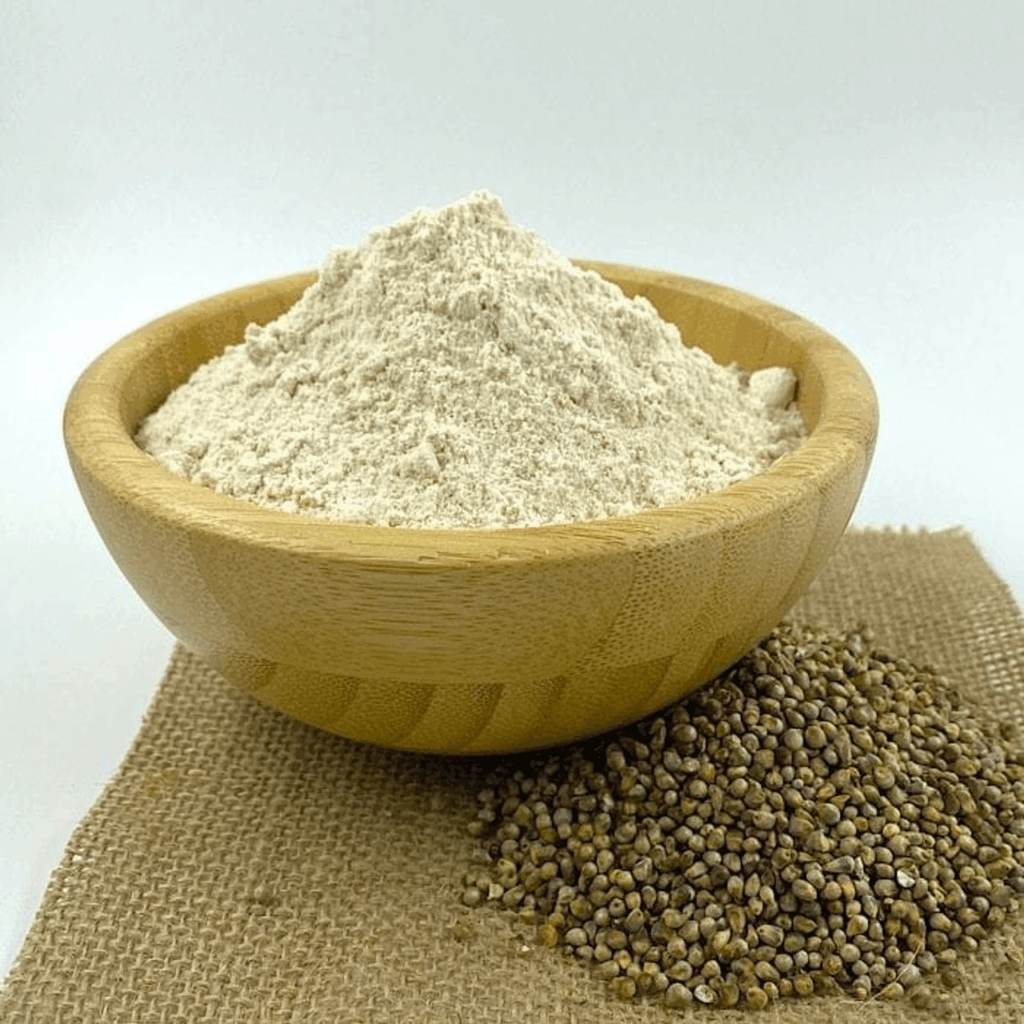
12. Millet Flour
Millet flour is made from ground millet seeds, a small, round grain with a mild flavor.
- Challenges: Slightly grainy texture, requiring blending with other flours for better texture.
- Applications: Used in gluten-free baking, including muffins, bread, and pancakes.
- Benefits: High in magnesium, phosphorus, and antioxidants. Millet is also a good source of protein and fiber.
- Sustainability: Millet is drought-resistant and requires fewer resources, making it a sustainable crop.

13. Buckwheat Flour
Buckwheat flour is made from the seeds of the buckwheat plant, which, despite the name, is not related to wheat and is gluten-free.
- Applications: Buckwheat flour is used in pancakes, waffles, and in gluten-free baked goods. It can also be used in savory dishes like buckwheat noodles (soba).
- Benefits: Buckwheat flour is rich in fiber, protein, and essential nutrients like magnesium, iron, and B vitamins. It also contains antioxidants that help fight inflammation.
- Sustainability: Buckwheat is a hardy crop that requires fewer pesticides and fertilizers, making it a sustainable choice.
- Challenges: Buckwheat flour has a strong, earthy flavor, which may not be suitable for all recipes. Additionally, it can result in denser baked goods.
Sustainability of Flour Alternatives
When considering flour alternatives, many of these options offer a lower environmental impact compared to traditional wheat flour. For example:
- Buckwheat and barley require fewer resources like water and pesticides, making them more sustainable options compared to wheat.
- Corn flour and sweet potato flour are resource-intensive but are essential crops in many parts of the world and are often used in sustainable food production systems.
Choosing sustainable flour alternatives can help reduce your carbon footprint and contribute to a healthier planet.
Challenges in Adopting Flour Alternatives
While there are numerous healthy flour alternatives, there are challenges that can arise when transitioning from traditional wheat flour:
- Texture: Many alternative flours, like rice flour or chickpea flour, create denser textures in baked goods compared to wheat flour, which may not appeal to everyone.
- Taste: Some flour alternatives, such as buckwheat flour and sweet potato flour, have distinct flavors that may not work in all recipes.
- Price: Many alternative flours, particularly those like almond flour and coconut flour, can be more expensive than traditional wheat flour.
- Availability: Depending on where you live, some alternative flours may not be as widely available, making it harder to find the right flour for your needs.
There is no shortage of flour alternatives available, offering solutions for people with dietary restrictions, preferences, and sustainability concerns. Whether you’re looking for a gluten-free flour, a low-carb option, or simply a more nutritious flour for your cooking and baking, there is a flour alternative that suits your needs.
By exploring options like almond flour, chickpea flour, corn flour, and buckwheat flour, you can enjoy healthier and more sustainable cooking without sacrificing flavor or texture.
Keywords Integrated:
flour alternatives, healthy flour options, gluten-free flour, almond flour, coconut flour, rice flour, chickpea flour, oat flour, sustainable baking, low-carb flour.

